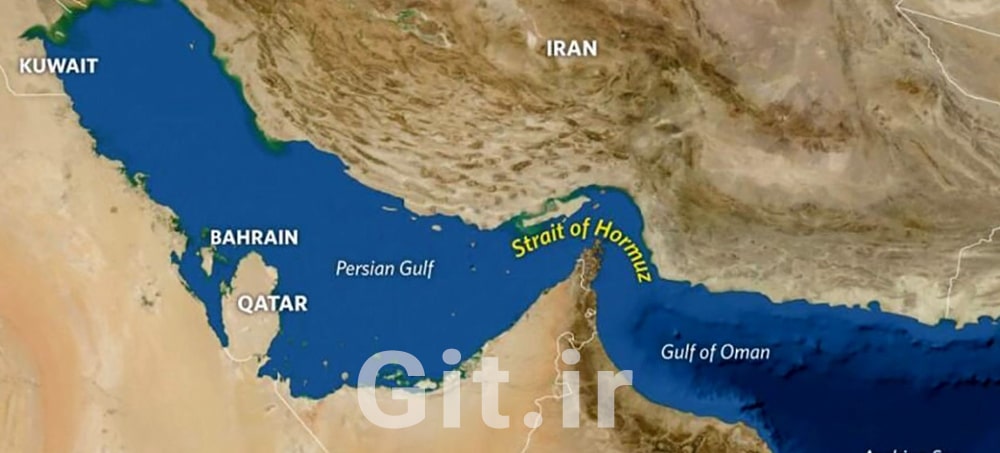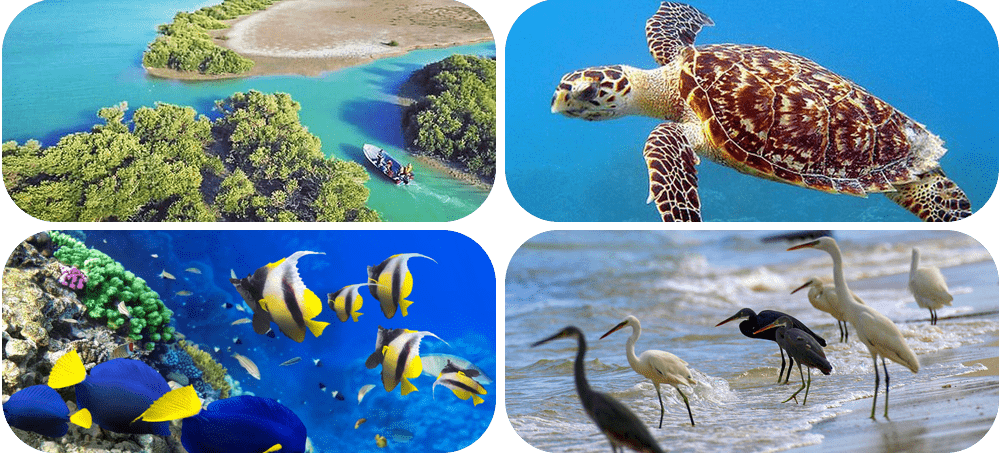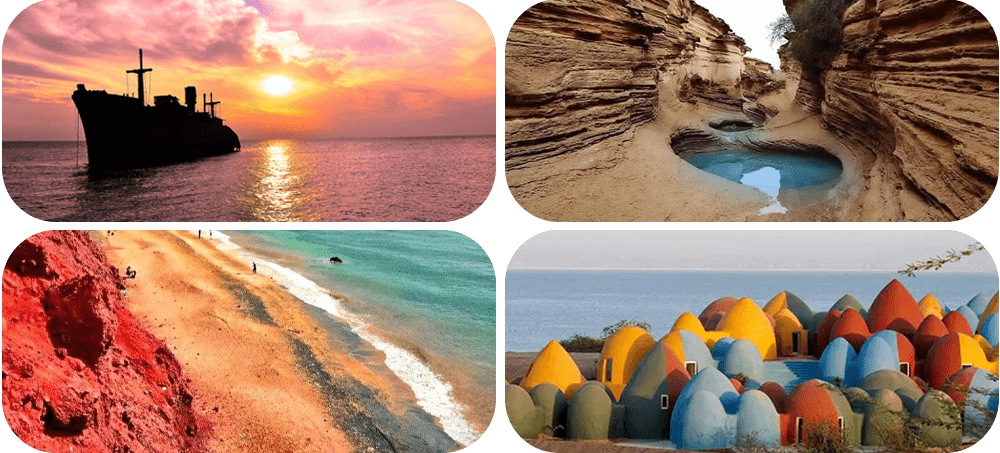10 Amazing Facts About the Persian Gulf
The Persian Gulf, a name intertwined with history and civilization, is far more than just a body of water. This sea holds a treasure trove of natural and historical wonders. In this article, we embark on a journey to explore ten captivating and lesser-known facts about this ancient and strategic sea.

Have you ever paused to consider the remarkable story hidden within the turquoise waters of the Persian Gulf? This body of water, the turquoise pearl of the Middle East, with its stunning beauty, tranquil waters, warm shores, and dense palm groves, is not only a vital artery for the global economy but also a testament to history, a treasure of natural wealth, and a symbol of Iranian cultural identity. From ancient times to the present, the Persian Gulf has nurtured great civilizations and played a pivotal role in global trade, culture, and human history.
Table of Contents
- Fact One: Cradle of Ancient Civilizations
- Fact Two: Beating Heart of Global Energy
- Fact Three: A Sea with a Historic Name
- Fact Four: Vibrant Marine Ecosystem
- Fact Five: Geological Marvel
- Fact Six: Beautiful and Strategic Islands
- Fact Seven: Historical and Strategic Crossroads
- Fact Eight: Environmental Challenges
- Fact Nine: Shining Pearls and Maritime Culture
- Fact Ten: Cornerstone of Iranian Identity
Fact One: Cradle of Ancient Civilizations
The Persian Gulf is not merely a waterway; it is a cradle where early human civilizations were born and flourished. Archaeological evidence indicates that human settlements in this region date back to around 5000 BC. Great civilizations such as the Elamites, Sumerians, Babylonians, and Assyrians leveraged the strategic location of the Persian Gulf for trade and to expand their cultural and political influence. The historic port of Siraf in Iran, one of the most vibrant commercial hubs in the 3rd century AH, exemplifies the region’s grandeur. This port was the birthplace of Suleiman the Merchant of Siraf, who documented a maritime journey from Iran to China.
Some geological hypotheses go further, suggesting that the bed of the Persian Gulf, before being submerged around 15000 years ago after the last Ice Age, may have been the cradle of Mesopotamian civilization. Archaeological findings on the northern and southern shores, including stone tools and ancient pottery, testify to the presence of advanced societies. The Persian Gulf’s geographical position, connecting East and West, made it a hub for cultural and economic exchanges, and its role in shaping human civilization is undeniable.
Dilmun Civilization: Around 2000 BC, it thrived in present-day Bahrain and was known in Sumerian texts as the land of the gods.
Ancient Trade: The Persian Gulf was the primary route for trading goods like pearls, frankincense, and spices between Mesopotamia, India, and Africa.
Siraf Port: This port, with stone structures still visible underwater, was a gateway for ancient civilizations.
Fact Two: Beating Heart of Global Energy
In the modern world, the Persian Gulf is recognized as the beating heart of global energy. This body of water hosts vast oil and gas reserves, accounting for approximately 63 percent of the world’s known oil reserves and over 40 percent of gas reserves. Daily, about 17 million barrels of crude oil pass through the Strait of Hormuz, the gateway to the Persian Gulf, meeting a significant portion of global energy needs. The region’s oil resources are highly valued due to their abundance, ease of extraction, and low production costs.
Despite this immense wealth, countries bordering the Persian Gulf face challenges such as over-reliance on oil revenue and global market fluctuations. Consequently, these nations have recently embarked on efforts to diversify their economies. Investments in sectors like tourism, information technology, and renewable energy are part of this strategy. Nevertheless, the strategic importance of the Persian Gulf as the world’s primary energy artery makes it one of the most sensitive geopolitical regions, where any disruption could impact the global economy.
Oil Reserves: Approximately 728 billion barrels of crude oil, equivalent to 55 percent of proven global reserves, are located in this region.
Strait of Hormuz: Around 20 percent of the world’s consumed oil passes through this strait daily.
Economic Diversification: Countries like Iran and the UAE are developing tourism and non-oil industries.
Fact Three: A Sea with a Historic Name
The name "Persian Gulf" is not just a geographical label but a living testament to Iranian history and identity. Ancient Greeks called this body of water the "Persian Sea," a name derived from the Pars tribe, founders of the Achaemenid Empire around 800 BC. This name is recorded in historical texts, maps, and works by prominent geographers like Ptolemy and Strabo. Even before the Pars, Assyrian inscriptions referred to this sea as "Nar Marratu" (bitter water), highlighting its historical depth.
Iran has preserved this cultural heritage by registering the name Persian Gulf with the World Intellectual Property Organization (WIPO) and celebrates May 10 as "National Persian Gulf Day." This day commemorates the expulsion of the Portuguese from the Strait of Hormuz in 1622 by Shah Abbas Safavi. Despite occasional attempts to use alternative names, the Persian Gulf remains an integral part of Iranian identity, steadfast in the hearts of Iranians and international records.
Name Origin: The name "Persian Gulf" stems from the Persian Empire and is confirmed in Greek, Roman, and Islamic texts.
National Day: May 10 is celebrated as a symbol of Iran’s sovereignty over this waterway.
Global Recognition: The Persian Gulf is recognized as the official name in international organizations.

Fact Four: Vibrant Marine Ecosystem
Beyond the image of oil wells and massive ships, the Persian Gulf is a vibrant marine ecosystem with astonishing biodiversity. This waterway is home to over 700 fish species, five endangered sea turtle species (such as green and hawksbill turtles), playful dolphins like bottlenose and humpback dolphins, and colorful coral reefs. Uninhabited islands like Larak and Hengam serve as sanctuaries for seabirds, turtles, and migratory birds, while mangrove forests along the coasts play a crucial role in maintaining ecological balance.
However, this ecosystem is fragile due to its shallow depth (average 50 meters), high salinity, and limited connection to open waters. Coral reefs, which support 80 percent of the region’s marine species, are highly sensitive to environmental changes. The Gulf’s islands and wetlands host thousands of migratory birds annually, traveling from Africa and Asia. Protecting this biodiversity is essential not only for the region’s ecosystem but also for global wildlife balance.
Marine Species: Over 700 fish species and several dolphin and turtle species inhabit these waters.
Mangrove Forests: Found along Qeshm and Hormoz coasts, these forests are unique habitats and natural barriers against erosion.
Migratory Birds: The Persian Gulf’s wetlands, like the Hara Wetland, are key stopovers for birds on migration routes.
Fact Five: Geological Marvel
The Persian Gulf is the result of complex geological processes spanning millions of years. About 500000 years ago, the first signs of this basin appeared alongside southern Iran’s plains. Its current form took shape after sea levels rose around 15000 years ago, following the last Ice Age. At that time, the region was a vast valley through which the mighty Arvandrud River flowed. The subduction of the Arabian plate beneath the Zagros Mountains also contributed to the basin’s formation.
During the peak of the Ice Age, sea levels were 120-130 meters lower, and the Persian Gulf was a riverine plain. As glaciers melted, waters from the Indian Ocean flooded this plain, forming the modern Persian Gulf. These changes reshaped the region’s geography, climate, and wildlife. Archaeologists believe that remnants of human settlements on the Gulf’s seabed hold evidence of life before these transformations.
Basin Formation: Subduction of the Arabian plate and rising waters shaped the Persian Gulf.
Ancient Plain: Before 15000 years ago, this region was a vast plain with large rivers.
Archaeological Remains: Divers have found potential remnants of underwater settlements in the Persian Gulf.

Fact Six: Beautiful and Strategic Islands
The Persian Gulf is home to dozens of small and large islands, each with unique attractions and tales. Notable islands include:
Qeshm: The largest island in the Persian Gulf and a UNESCO Biosphere Reserve. Qeshm is renowned for natural wonders like the “Valley of Stars,” with eroded crevices and stone pillars steeped in legends, including tales of jinn ruling the valley at night. Its mangrove forests (Hara) span 9000 hectares, making them the largest in the Gulf.
Hormoz: A small mountainous island with vibrant soils in over 70 shades, resembling a rainbow. Local myths suggest these soils are edible, making Hormoz a unique tourist destination. The Portuguese built a fortress here in the 16th century, and old European tales speak of the island’s treasures.
Kish: A populated island with modern tourist attractions and free markets. Its ancient qanat (Kariz), over 2500 years old, showcases past inhabitants’ water engineering skills. Coral beaches and an underground ancient city add to Kish’s cultural richness.
Hengam: A small island near Qeshm with pristine nature and unique wildlife. Known as the “home of wild dolphins,” it attracts playful dolphins in abundance. Its white beaches and coastal forests are among its highlights.
Tanb and Abu Musa: Three Iranian islands with small populations and unique historical narratives. Their proximity to the Strait of Hormuz and recent political disputes have given them a significant place in modern history.
Fact Seven: Historical and Strategic Crossroads
From ancient times to today, the Persian Gulf has been a strategic crossroads for trade and global interactions. This waterway connected East and West via maritime routes, with great empires like the Achaemenids, Sassanids, and Portuguese vying for control. The expulsion of the Portuguese from the Strait of Hormuz in 1622 by Shah Abbas Safavi was a turning point, solidifying Iran’s sovereignty over the Gulf.
In modern times, the Persian Gulf remains at the center of global attention due to its vast energy resources and geopolitical significance. Events like the Iran-Iraq War (1980-1988) and the Gulf War (1991) underscore the region’s sensitivity. The presence of global powers and the importance of the Strait of Hormuz as an energy chokepoint make the Persian Gulf one of the world’s most critical regions. Its tumultuous history attests to its unparalleled role in regional and global developments.
Trade Route: Since ancient times, the Persian Gulf was the main trade route between Asia, Africa, and Europe.
Historical Events: The expulsion of the Portuguese and modern wars highlight the region’s strategic importance.
Strait of Hormuz: This strait, one of the world’s most sensitive points, is under constant global scrutiny.
Fact Eight: Environmental Challenges
The Persian Gulf faces serious environmental challenges that threaten its fragile ecosystem. Oil pollution from ship leaks and refineries, industrial and urban wastewater discharge, plastic waste, and thermal pollution endanger marine life. Global warming, with rising water temperatures, ocean acidification, and coral bleaching, exacerbates these issues. Overfishing of valuable species like grouper and habitat destruction from artificial island construction add further pressure to this ecosystem.
Nevertheless, numerous efforts are underway to protect the Persian Gulf. Iran has established a database of over 5000 aquatic species in the Persian Gulf and Sea of Oman to bolster scientific conservation. Coral reef restoration programs, registering coastal wetlands under the Ramsar Convention, and protecting mangrove forests are among other initiatives. Coastal countries have designated Marine Protected Areas (MPAs), and organizations like the “Persian Gulf Marine Environment Protection Organization” work toward regional cooperation. These efforts reflect a global commitment to preserving this natural treasure.
Oil Pollution: Oil spills from ships and facilities are a major threat to marine life.
Climate Change: Rising temperatures and acidification endanger coral reefs.
Conservation Efforts: Establishing protected areas and coral restoration programs are steps toward ecosystem recovery.
Fact Nine: Shining Pearls and Maritime Culture
The Persian Gulf has long been known as the “land of pearls” and was a global hub for pearl diving until the 1930s. Courageous coastal divers plunged into the depths to harvest pearl-filled oysters, bringing wealth and fame to port cities like Bushehr and Bandar Abbas. This industry created splendid architecture in the region but declined with the advent of Japanese cultured pearls. Still, the legends of pearl diving live on in southern Iran’s culture.
The Persian Gulf’s maritime culture is vibrant and rich. Bandari music with its lively rhythms, local dances, and seafood dishes like ghalyeh mahi, havari, and hazari reflect the warm, welcoming spirit of coastal communities. Traditional fish markets in Bushehr and Khorramshahr, seafaring ceremonies, and local customs highlight the deep bond between the people and the sea. This culture, like the Gulf’s waves, is ever-vibrant and full of energy.
Pearl Diving: Until the early 20th century, Persian Gulf pearls were renowned in global markets.
Bandari Music: With romantic lyrics and fast rhythms, this music conveys the spirit of southern Iran.
Seafood Dishes: Dishes like ghalyeh mahi with local spices enjoy global fame.
Fact Ten: Cornerstone of Iranian Identity
The Persian Gulf is more than a geographical feature; it is an inseparable part of Iranian national identity. In ancient Iranian texts like the Avesta, this sea is referred to as “Frakhvkard” and has held a special place in Iranian beliefs and culture since antiquity. May 10, commemorating the expulsion of the Portuguese in 1622, is celebrated as “National Persian Gulf Day.” Established in Iran’s calendar since 2005, this day symbolizes Iranian sovereignty and pride in this waterway.
The culture, art, music, and traditions of the Persian Gulf’s coastal communities are deeply influenced by this sea. From Persian poets’ verses about the Gulf’s beauty to tales of ancient mariners, this body of water resides in the hearts of Iranians. The Persian Gulf is not only a natural and economic asset but also a cultural cornerstone of Iran, preserved through generations. This profound connection makes the Persian Gulf a symbol of unity and national pride.
Ancient Texts: The name “Frakhvkard” in the Avesta reflects the cultural antiquity of the Persian Gulf.
National Day: The 1622 expulsion of the Portuguese was a turning point in Iran’s control over the Gulf.
National Identity: The Persian Gulf, in poetry, art, and culture, symbolizes Iran’s bond with its homeland.
Conclusion
The Persian Gulf, this turquoise gem, holds a remarkable story of history, nature, and culture. From the cradle of ancient civilizations and the beating heart of global energy to a vibrant ecosystem, strategic islands, and rich culture, every aspect tells a unique tale. Despite environmental challenges, regional and global efforts to protect this heritage continue. The Persian Gulf, with its historical identity and timeless allure, remains an inspiration and source of pride for Iranians. It is our duty to preserve this treasure for future generations through sustainable use and respect.
Please Log in to leave a comment.